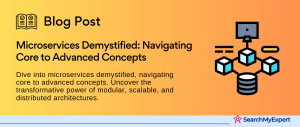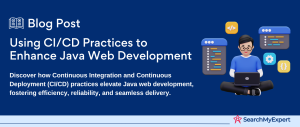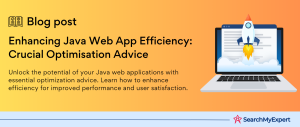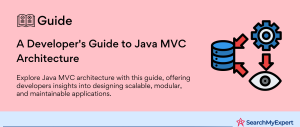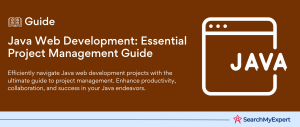Understanding Web Development Frameworks: Why Java Reigns Supreme
In the ever-evolving world of web development, frameworks have emerged as cornerstone elements that simplify the process of building robust, efficient, and scalable web applications. These frameworks are essentially pre-written code libraries that provide a foundation upon which developers can build, offering pre-set modules, functionalities, and a structured way to create web apps. The beauty of web development frameworks lies in their ability to streamline development processes, reduce the amount of code required, and enhance application security.
Java’s Dominance in Web Development
Among the plethora of programming languages, Java stands out as a perennial favorite for web development. Its popularity is not unfounded – Java boasts remarkable features like platform independence, robustness, and excellent performance, making it a go-to choice for developers globally. The language’s ability to run on any device that supports Java without the need for recompilation is a testament to its versatility and enduring relevance in the rapidly changing tech landscape.
Java’s ecosystem is rich with a variety of frameworks, each offering unique features and capabilities. This abundance, however, can be a double-edged sword. On one hand, it provides developers with a wide array of options to choose from; on the other, it poses a challenge in selecting the most suitable framework for a specific project.
Aiming for an Informed Choice
This article aims to demystify the realm of Java web development frameworks. By providing a comprehensive overview of the most popular frameworks, we seek to empower developers with the knowledge to make an informed decision when choosing the right framework for their projects. Whether you are a seasoned developer or just starting out, understanding the strengths and weaknesses of each framework is crucial in determining which one aligns best with the requirements and goals of your project.
Key Criteria for Comparing Java Web Development Frameworks
When it comes to choosing the right Java web development framework, there are several key criteria to consider. These criteria help in evaluating and comparing the myriad of options available, ensuring that the chosen framework aligns perfectly with the project’s requirements. Let’s delve into the essential aspects to consider:
Architectural Features
- Model-View-Controller (MVC):
MVC is a popular design pattern in web development. A framework offering an MVC architecture assists in separating the application logic from the user interface, facilitating easier maintenance and scalability. - Microservices Architecture:
For complex applications requiring high scalability, a framework supporting microservices architecture is vital. This architecture breaks the application into smaller, independent services that can be developed, deployed, and scaled independently.
Learning Curve and Developer Experience
- Ease of Use:
The complexity of a framework directly impacts the time required to become proficient. A framework with a gentle learning curve is preferred for rapid development. - Documentation and Resources: Comprehensive documentation and a plethora of learning resources are indispensable for developers to navigate through the framework’s features and capabilities.
- Community Support:
A strong community support system, including active forums, user groups, and regular meetups, is essential for problem-solving and knowledge sharing.
Features and Functionalities
- Security: With the increasing importance of web security, a framework that comes with built-in security features like CSRF protection, XSS prevention, and SQL injection prevention is crucial.
- Performance:
The ability of the framework to handle high loads and optimize response times is a significant factor, especially for applications expecting high traffic. - Testing:
Built-in testing tools enable developers to easily write and execute tests, ensuring the application’s reliability and stability. - Integrations: Support for integrating with other tools and technologies is necessary for a seamless development experience.
Target Audience
- Enterprise Applications: For large-scale enterprise applications, frameworks that offer robustness, scalability, and integration capabilities are preferable.
- Microservices: If the project is oriented towards microservices, the framework should support lightweight, independent deployment of services.
- Single-Page Applications (SPAs):
Frameworks that are optimized for building SPAs can significantly improve the performance and user experience of these applications.
Maturity and Stability
- Versioning and Release Cycles:
A mature framework with regular release cycles, version updates, and a clear roadmap is indicative of stability and ongoing development. - Bug Fixes and Support: Active maintenance, including timely bug fixes and support for older versions, is crucial for the long-term success of a project.
In-Depth Comparison of Top Java Web Development Frameworks
Java’s vast ecosystem includes several powerful web development frameworks, each with its unique strengths and focus areas. To help developers navigate these options, we’ll delve into a detailed comparison of some of the most popular Java frameworks. This comparison will outline their key features, strengths, weaknesses, and the typical use cases they are best suited for.
Spring Framework
- Strengths:
Renowned for its comprehensive set of features, Spring excels in creating robust, enterprise-level applications. It’s highly modular, allowing developers to pick and choose the components they need. - Weaknesses:
The complexity and richness of Spring can be daunting for beginners. - Target Audience: Ideal for enterprise applications requiring robustness and scalability.
Spring Boot
- Strengths:
Simplifies the development process by automating configuration. It’s perfect for building microservices with minimal effort. - Weaknesses:
While it’s easier to start with, understanding its auto-configuration and the entire Spring ecosystem can be challenging. - Target Audience:
Developers looking to quickly develop microservices or standalone applications.
Play Framework
- Strengths: Known for its lightweight nature and stateless architecture, Play is suitable for high-performance applications. It supports both Java and Scala.
- Weaknesses: Lesser community support compared to Spring.
- Target Audience: Suitable for scalable web applications, especially when working with Scala.
Dropwizard
- Strengths:
It’s a lightweight framework designed for the rapid development of RESTful web services. Dropwizard comes with out-of-the-box support for advanced configuration and application metrics. - Weaknesses: Limited scope compared to more comprehensive frameworks like Spring.
- Target Audience: Developers needing to quickly create RESTful web services.
Struts
- Strengths:
One of the older frameworks, known for its robustness and extensive feature set. - Weaknesses:
Has fallen out of favor due to its complexity and the rise of more modern frameworks. - Target Audience: Suitable for legacy systems and those familiar with its architecture.
JSF (JavaServer Faces)
- Strengths:
Backed by Oracle, JSF is a component-based framework that simplifies building user interfaces for Java EE applications. - Weaknesses:
Can be overly complex for simple projects; some developers find it less intuitive compared to other frameworks. - Target Audience:
Best for enterprise applications that require heavy UI work and are tied to the Java EE ecosystem.
Spark Framework
- Strengths:
A micro-framework for creating web applications in Java with minimal effort. Known for its simplicity and ease of use. - Weaknesses: Not as feature-rich as some of the larger frameworks.
- Target Audience:
Ideal for small to medium-sized applications and beginners in web development.
Vaadin
- Strengths:
Focused on UI, Vaadin allows for building modern web apps with a rich user interface. It’s great for creating complex web UIs using Java. - Weaknesses:
More suited for UI-intensive applications, and might be overkill for simpler projects. - Target Audience: Developers focused on creating complex, interactive web UIs.
Grails
- Strengths: Built on top of Spring Boot, Grails offers a high-productivity framework that leverages the Groovy language.
- Weaknesses:
Less popular than pure Java frameworks, which can affect community support and resources. - Target Audience:
Suitable for developers looking for rapid application development with a focus on convention over configuration.
In-depth exploration of Leading Java Web Development Frameworks
For a more detailed understanding, let’s focus on three widely used Java web development frameworks: Spring Boot, Play Framework, and Vaadin. These frameworks stand out for their unique characteristics, catering to different aspects of web development.
Spring Boot: Simplifying Enterprise Java Development
Architecture and Implementation Details
- Spring Boot is built on top of the conventional Spring framework. It simplifies the setup process, eliminating much of the boilerplate code required in Spring.
- It offers an opinionated view of the Spring platform, which means it comes pre-configured with the best settings to get a project up and running quickly.
- Its auto-configuration feature detects classes in the classpath and automatically configures necessary beans.
Key Features and Functionalities
- Standalone Applications:
Spring Boot can create standalone applications that you can “just run”. - Embedded Server:
It integrates Tomcat, Jetty, or Undertow directly, without needing to deploy WAR files. - Microservices Ready: Ideal for building microservices due to its independence and minimal configurations.
Typical Use Cases and Applications
- Spring Boot is most effective in building microservices, large-scale enterprise applications, and cloud-based applications.
Integration Capabilities and Popular Libraries
- It integrates seamlessly with Spring ecosystem projects like Spring Data, Spring Security, and others.
- Offers extensive support for SQL and NoSQL databases, cloud services, and an array of third-party libraries.
Play Framework: High-Performance Applications Made Easy
Architecture and Implementation Details
- Play Framework is a reactive framework based on a lightweight, stateless, web-friendly architecture.
- Supports both Java and Scala, and it’s built on the Akka toolkit, providing a reactive programming model.
- Emphasizes asynchronous processing, enabling it to handle long-running requests without blocking.
Key Features and Functionalities
- Asynchronous by Default:
Makes extensive use of Futures for handling long-running operations. - Hot Reloading:
Changes in the code are immediately reflected in the application, enhancing developer productivity. - Stateless Architecture: Ideal for applications that require scaling, as it simplifies load balancing and clustering.
Typical Use Cases and Applications
- Suitable for real-time applications, highly interactive web applications, and modern web services.
Integration Capabilities and Popular Libraries
- Integrates with most Java EE and Scala libraries.
- Offers built-in APIs for various functionalities including WebSocket and JSON parsing.
Vaadin: Building Rich Internet Applications with Ease
Architecture and Implementation Details
- Vaadin leverages server-side logic, which means most of the UI logic runs on the server.
- It uses Java as the programming language for creating UI, unlike traditional frameworks that use JavaScript.
- Offers a wide range of UI components and layouts that can be extended or customized.
Key Features and Functionalities
- Rich UI Components: Comes with a comprehensive set of UI components for building rich web applications.
- Data Binding:
Offers strong data binding capabilities, making it easier to connect UI components to data sources. - Responsive Layouts:
Supports building responsive web designs out of the box.
Typical Use Cases and Applications
- Best suited for internal business applications, enterprise-grade systems, and applications requiring rich and interactive user interfaces.
Balancing the Scales: Advantages and Disadvantages of Using Java Web Development Frameworks
In the realm of web development, frameworks are akin to Swiss Army knives – versatile, powerful, and designed to tackle a multitude of challenges. However, like any tool, they come with their own set of strengths and weaknesses. It’s crucial for developers to understand both sides to make the most informed decisions for their projects.
Advantages of Using Web Development Frameworks
Increased Productivity
- Pre-built Functionality: Frameworks come with a plethora of built-in functionalities which drastically reduce development time.
- Standardized Practices:
They enforce standardized best practices in coding, enhancing collaboration among developers. - Automation: Tasks like database management and configuration are automated, allowing developers to focus on core logic.
Enhanced Code Maintainability
- Modular Structure: Frameworks encourage a modular approach to development, making it easier to update and maintain code.
- Community Support:
A strong community means better resources for troubleshooting and keeping the code up to date.
Improved Security
- Security Features:
Most frameworks come equipped with security features that protect against common vulnerabilities. - Regular Updates:
Ongoing updates from the framework’s community help in safeguarding the application against new threats.
Scalability and Performance Optimization
- Scalable Architecture:
Frameworks often have scalable architectures, making it easier to manage growing user bases and data. - Performance Optimization:
They are optimized for performance, offering caching mechanisms and efficient database querying.
Disadvantages of Framework Usage
Dependency and Compatibility Issues
- Framework Dependence:
Relying heavily on a framework can create dependency, where changes and updates in the framework might directly impact the application. - Compatibility:
Integrating with other tools or older systems can sometimes be challenging, depending on the framework.
Learning Curve
- Initial Learning: Each framework has its own learning curve, which can be steep, especially for complex frameworks like Spring.
- Keeping Up-to-date: Staying abreast with the latest updates and changes in the framework can be time-consuming.
Risk of Overkill for Simpler Projects
- Unnecessary Complexity:
For simple projects, a heavy-duty framework might introduce unnecessary complexity and overhead. - Resource Intensiveness:
More comprehensive frameworks might be more resource-intensive, which can be overkill for smaller applications.
Choosing the Right Framework for Your Project: A Comprehensive Guide
Selecting the right framework for a software project is a critical decision that can significantly impact the success and efficiency of the development process. The right framework not only streamlines development but also ensures that the final product meets the intended requirements and quality standards. In this guide, we’ll explore how to choose the most suitable framework for your specific project, considering factors like project requirements, team expertise, and desired functionalities.
Understanding Your Project Requirements
Define the Scope and Objectives of the Project
- Clearly outline the goals and objectives.
- Identify key functionalities and features needed.
Analyze Technical Requirements
- Determine the scalability needs.
- Assess the level of security required.
- Consider integration capabilities with other systems.
Evaluating Team Expertise and Preferences
Assess Current Skill Levels
- Evaluate the team’s proficiency with different programming languages and frameworks.
- Identify learning curves required for new frameworks.
Consider Team Preferences
- Take into account the team’s familiarity and comfort with certain frameworks.
- Factor in the community support and resources available for each framework.
Analyzing Desired Functionalities and Performance
Performance Needs
- Assess the framework’s ability to handle the expected load and performance requirements.
- Look for frameworks that offer efficient memory management and speed.
Specific Functionalities
- Identify frameworks that support specific features needed for the project (e.g., real-time data processing, AI capabilities).
Navigating the Ever-Evolving Landscape of Software Frameworks
As we wrap up our comprehensive journey through the world of software frameworks, it’s crucial to revisit the key insights and takeaways from our exploration. The realm of software development is dynamic, with the landscape of frameworks constantly evolving. This guide aims to equip you with the knowledge and tools necessary to make informed decisions in this ever-changing environment.
Key Takeaways from Our Framework Comparison
Importance of Alignment with Project Requirements:
- The paramount importance of choosing a framework that aligns with your project’s specific needs cannot be overstated. This includes considering aspects like scalability, security, and integration capabilities.
Team Expertise and Preferences Matter:
- The skill set and comfort level of your development team are critical factors. Opting for a framework that aligns with your team’s expertise can drastically reduce development time and improve overall efficiency.
Balancing Functionalities and Performance:
- A framework that offers the right mix of functionalities without compromising on performance is key. This balance is crucial for building robust and efficient applications.
Utilizing Decision-Making Tools:
- Tools like decision-making matrices are invaluable for objectively comparing different frameworks and making a choice that best suits your project’s unique requirements.
The Path Forward: Continuous Learning and Adaptation
The field of software development is one marked by rapid and continuous change. As such, it’s important for developers to stay abreast of the latest trends and updates in software frameworks.
- Embrace Continuous Learning:
Always be open to learning new frameworks and technologies. This not only keeps your skills relevant but also opens up new possibilities for innovative solutions. - Participate in Developer Communities: Engaging with online forums and communities can provide valuable insights and keep you updated on emerging frameworks and best practices.
- Experiment and Explore:
Don’t hesitate to experiment with new frameworks on smaller projects. This hands-on experience is invaluable for understanding the strengths and limitations of different frameworks.
Conclusion
The process of selecting the right software framework is a nuanced and critical decision that shapes the future of any development project. Through our detailed exploration, we’ve uncovered the importance of aligning with project requirements, leveraging team expertise, and balancing functionalities with performance. The decision-making matrix and the guidelines provided serve as invaluable tools in this selection process.
The landscape of software frameworks is ever-evolving, making continuous learning and adaptation key for developers. By engaging with the latest trends, participating in developer communities, and experimenting with new technologies, developers can stay ahead in this dynamic field.
Collaborate with experienced Java Development Service Agencies for impactful software.
Table of Contents
Toggle

